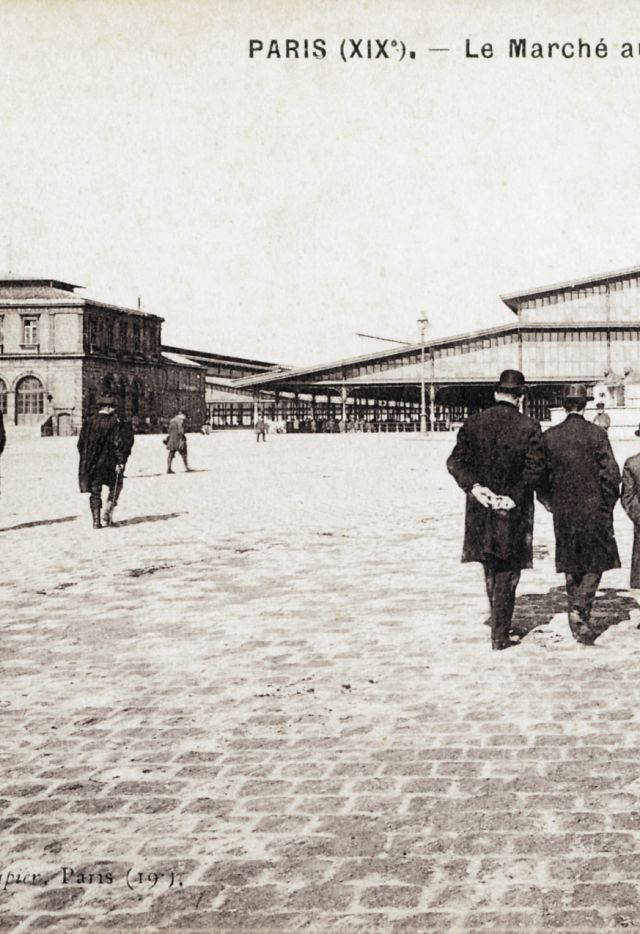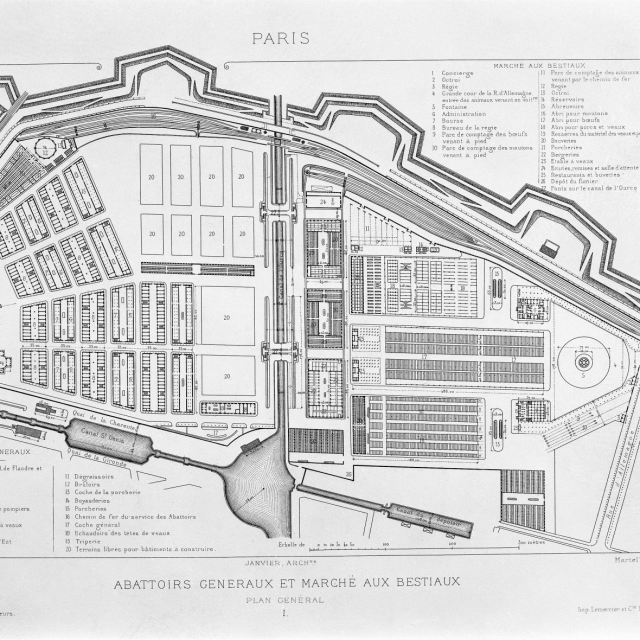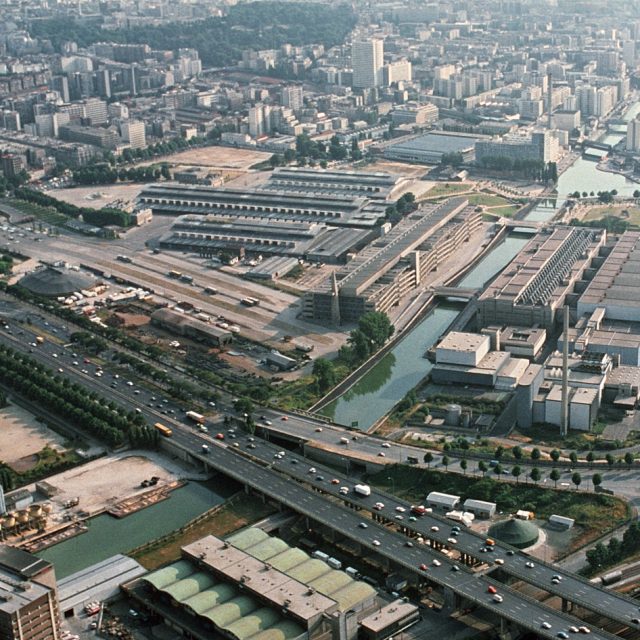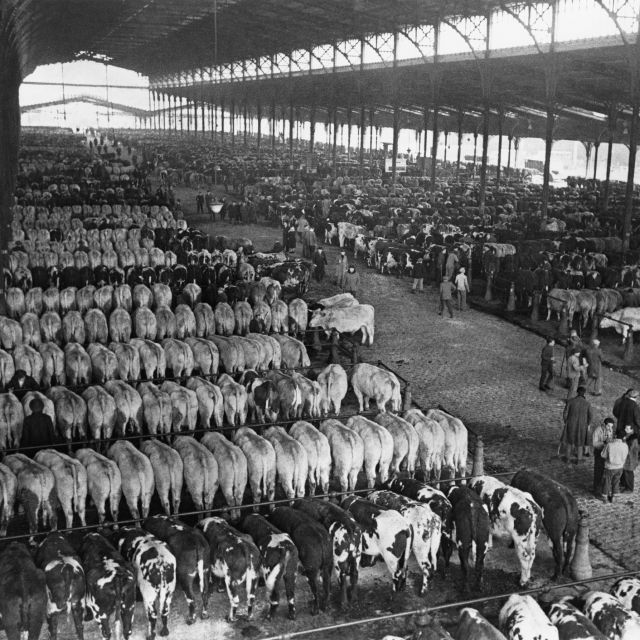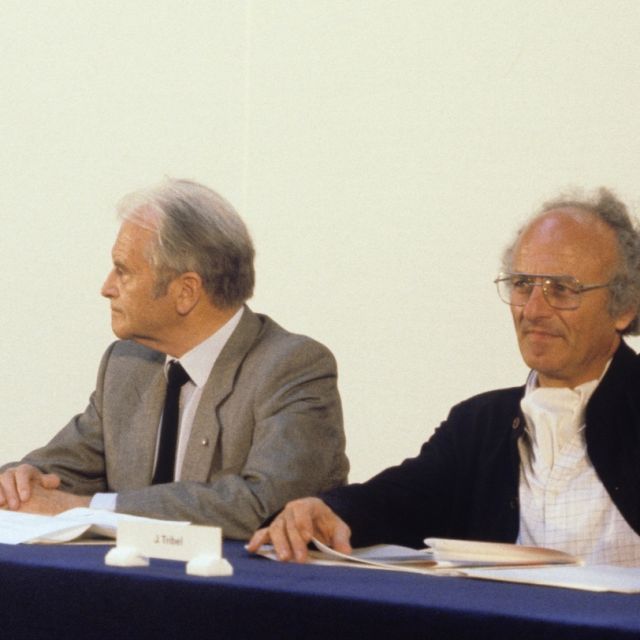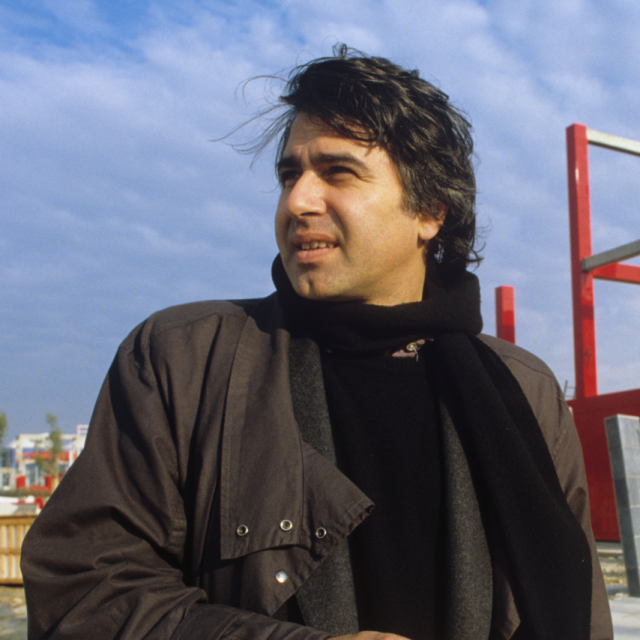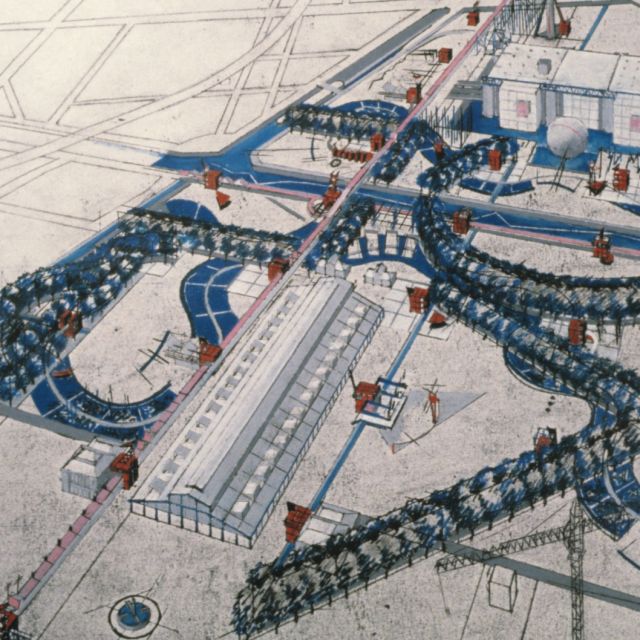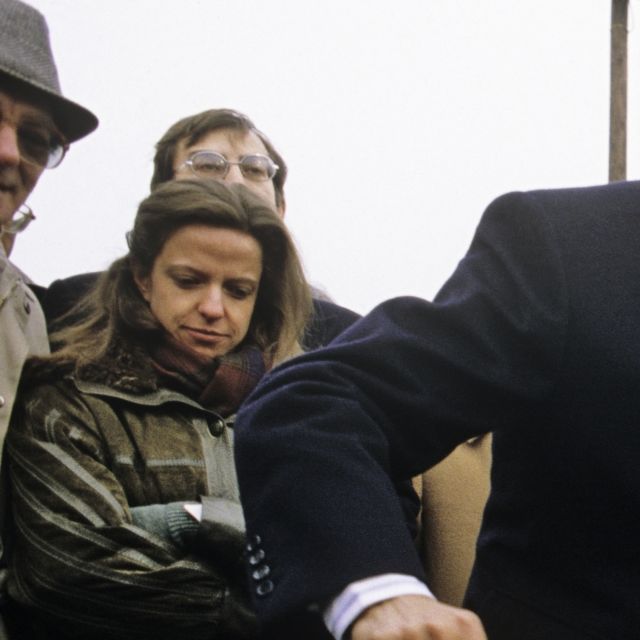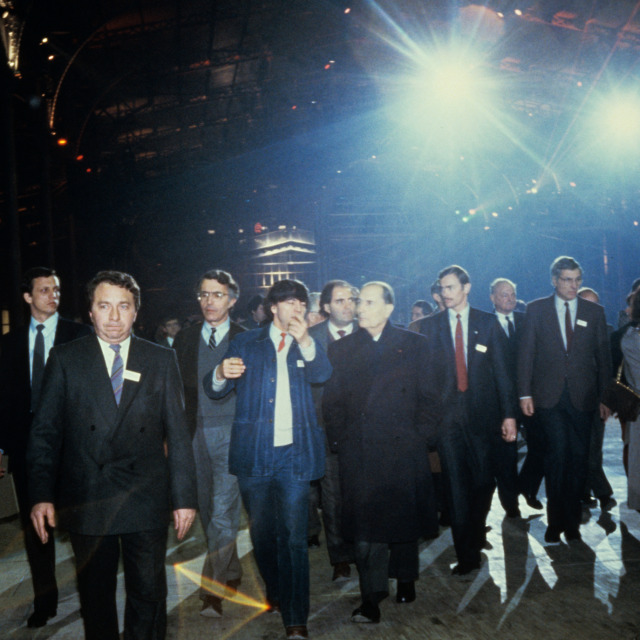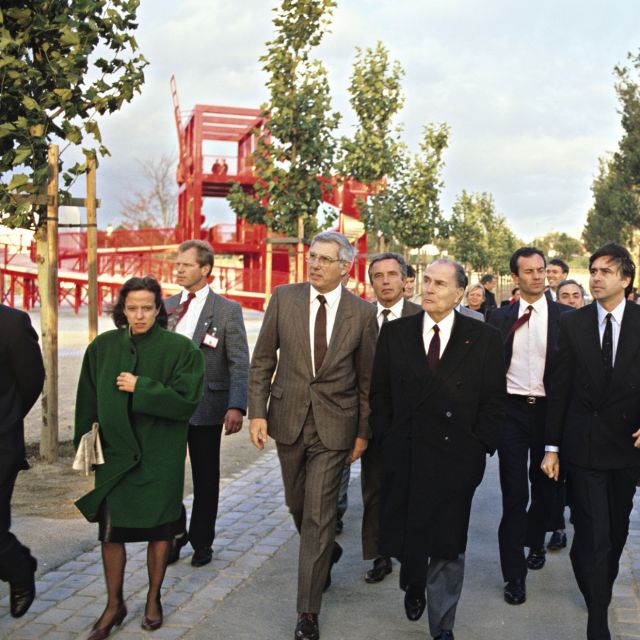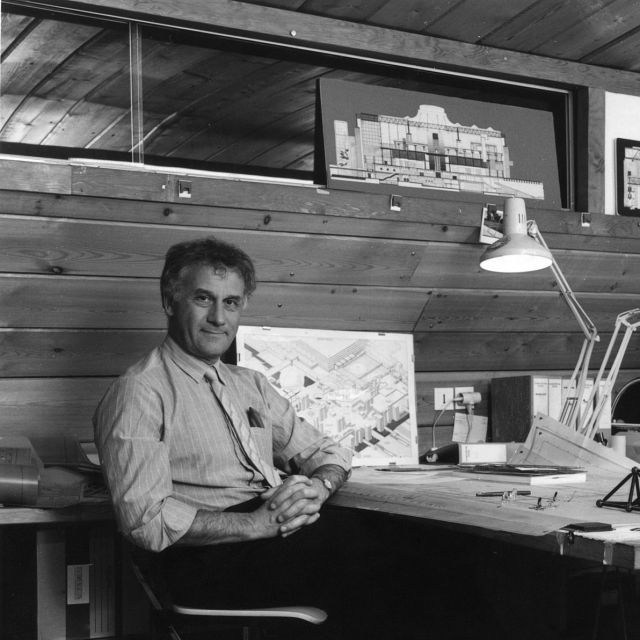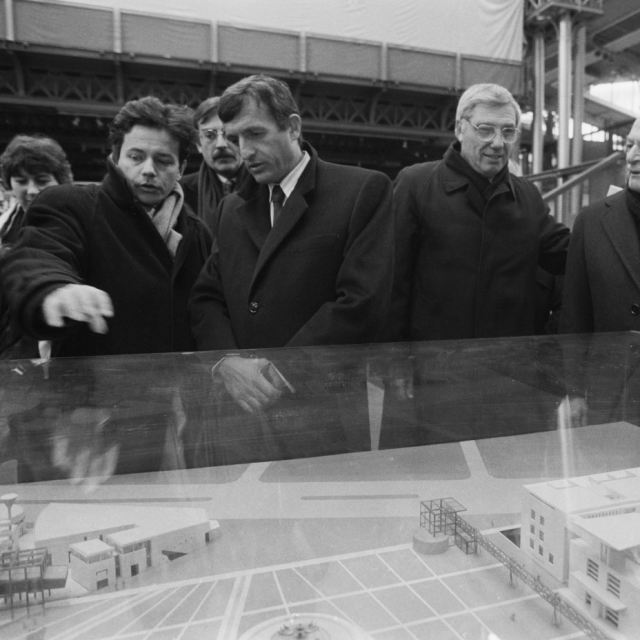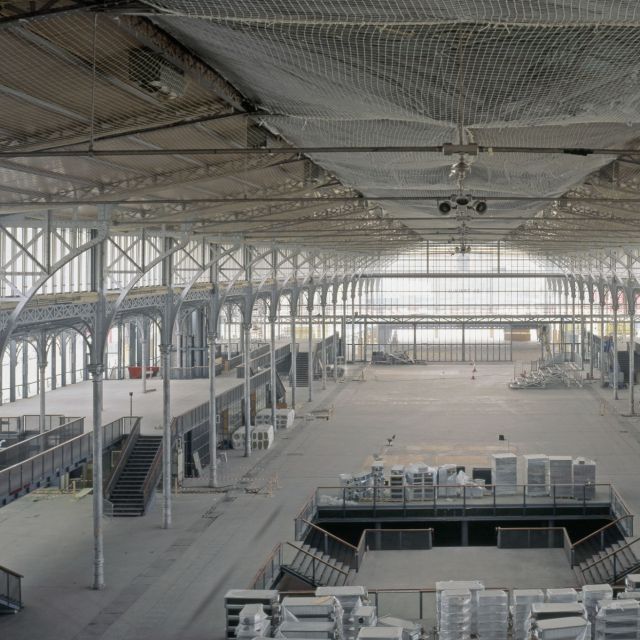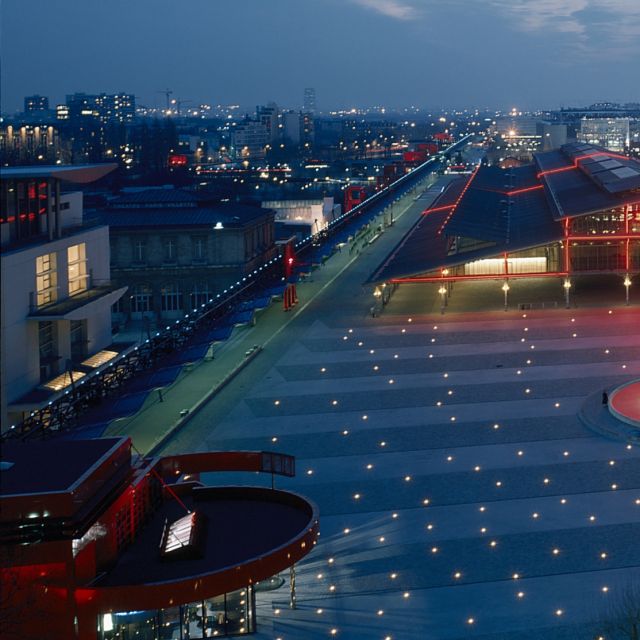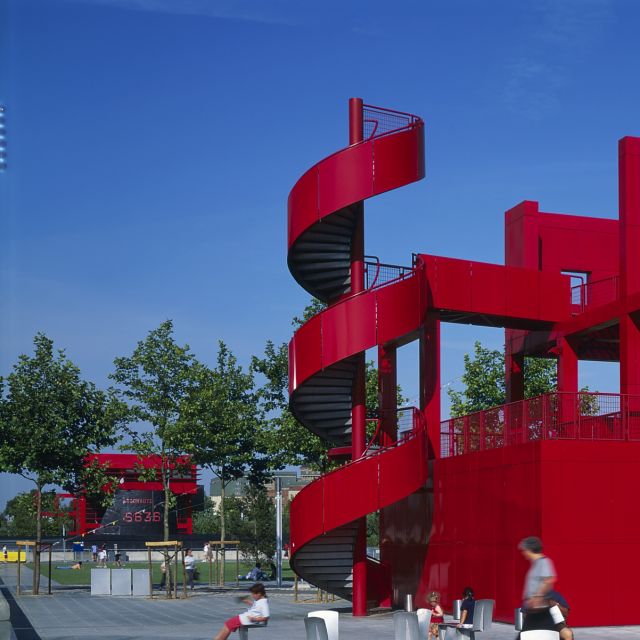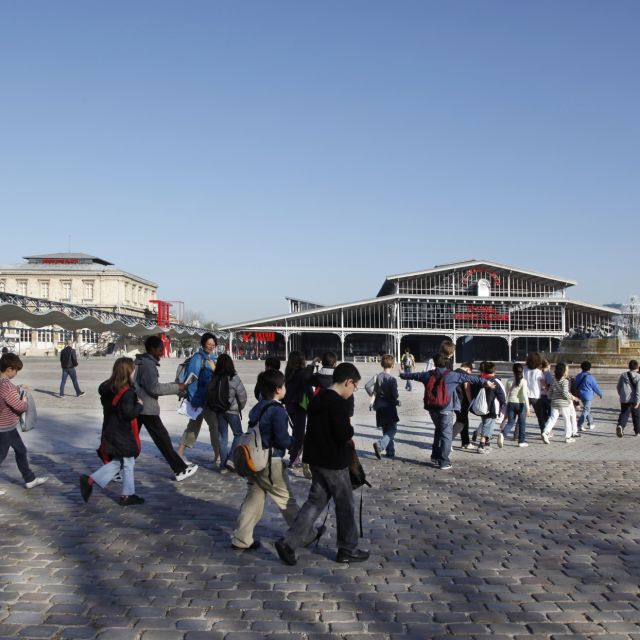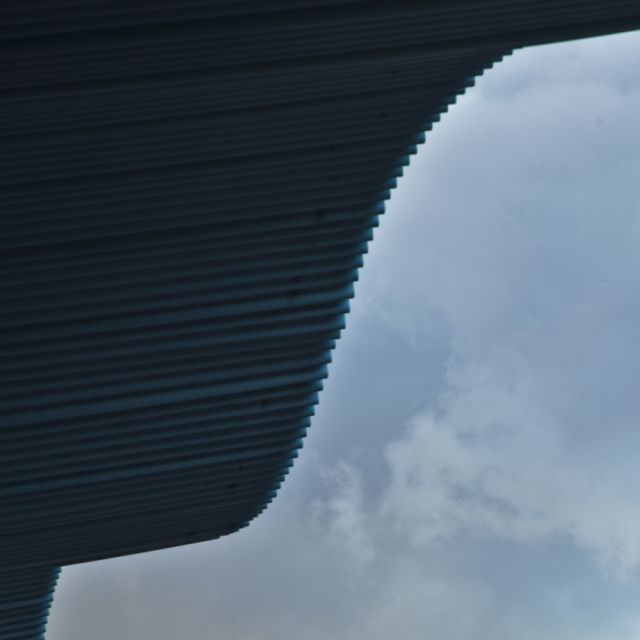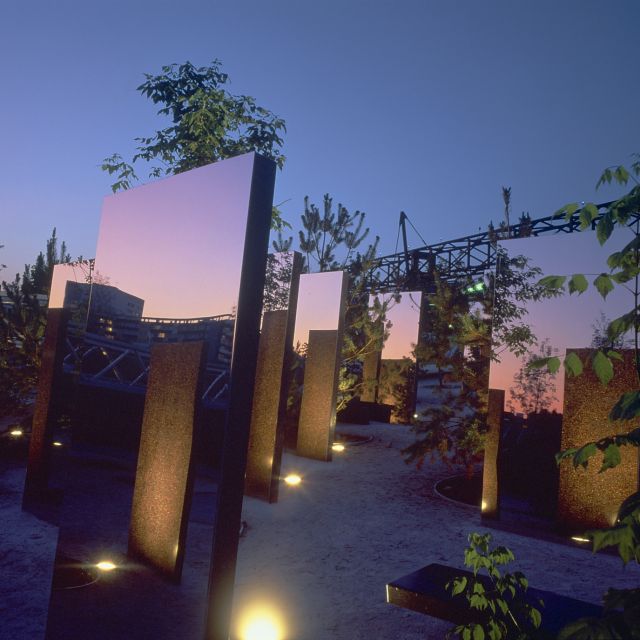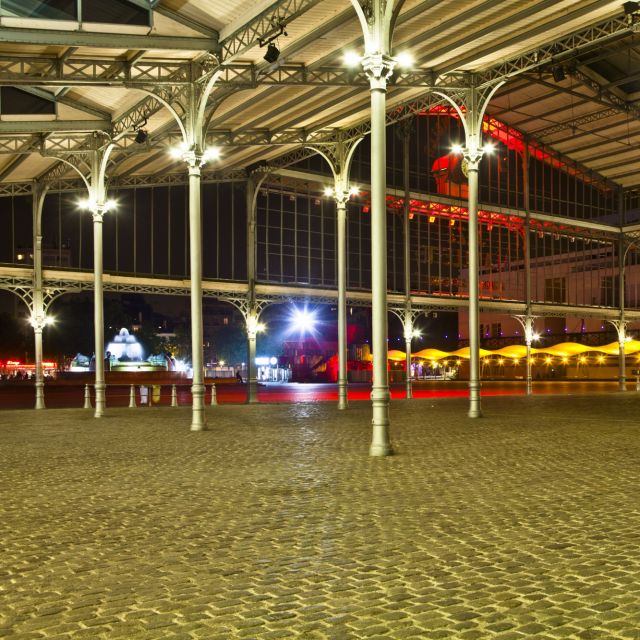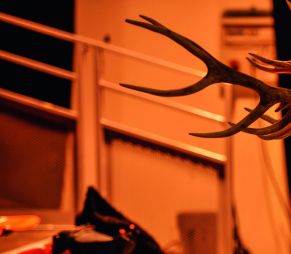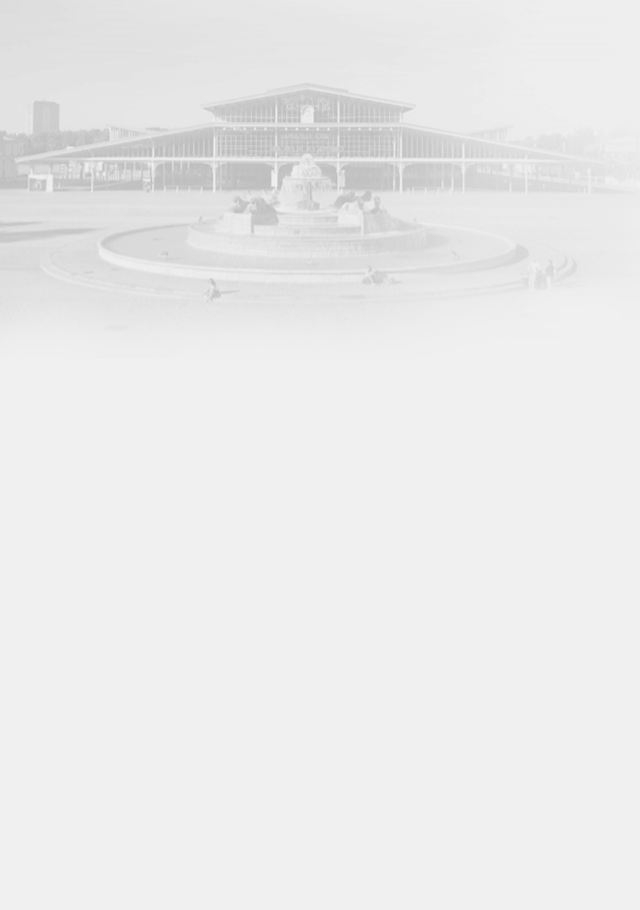Creation
November 1858: Haussmann launched the La Villette slaughterhouse project.
As part of plans to modernise Paris, Haussmann – who was Prefect for the Seine region – suggested to the Paris municipal council that the city’s slaughterhouses and cattle markets be grouped at La Villette.
20 January 1865: Construction work began.
Louis Janvier* was appointed as head architect.
*The Pavillon Janvier is named after him.
Golden age
1867: La Villette’s slaughterhouses opened to the public, followed by the cattle market on 21 October. This marked the beginning of a golden age, which lasted until the 1930s.
15 March 1974: The slaughterhouse officially closed its doors.
After the Rungis wholesale market opened on 2 January 1969, activities at La Villette gradually came to a close. The last cow was slaughtered on 15 March 1974.
La Villette’s cattle market in the 1950s. There were three halls: the sheep market on the left, the beef market in the middle, and the pork and veal market on the right. Of the three halls, only the Grande Halle remains today.
The project (Projet d'établissement public)
1975: Studies and projects were launched to determine La Villette’s future.
Between 1975 and 1981, La Villette faced an uncertain future. It was home to the Pavillon de Paris (which hosted concerts by groups like the Rolling Stones), fun fairs, skateparks and more. However, a long-term decision on the industrial site’s future was needed.
- In 1975, Jean Sérignan, managing director of SEMVI (Société d’économie mixte de la Villette – La Villette semi-public company), suggested turning the site into a major urban park.
- In 1977, French President Valéry Giscard d’Estaing launched consultations on creating a park and a museum of science and technology.
- In 1979, the Grande Halle became a listed historic monument.
13 July 1979: The Parc de la Villette public institution was created.
The EPPV (Établissement Public du Parc de la Villette or Parc de la Villette public institution) was founded in 1979 to develop the site. EPPV president, Paul Delouvrier, established the outlines of the project. Plans included three major institutions: a museum of science and technology, an auditorium for music and dance and an urban park for local residents.
15 September 1980: Architect Adrien Fainsilber was selected to design the museum of science and technology.
In September 1980, a competition was launched to build the Musée des sciences, des techniques et des industries (museum of science, technology and industry) in the slaughterhouse’s old auction room. After consulting 27 French architects, French President Valéry Giscard d’Estaing selected Adrien Fainsilber to design the museum.
17 May 1982: A competition was launched to develop the Parc de la Villette.
French Minister of Culture Jack Lang launched an international competition for architects and landscapers to develop the Parc de la Villette. The EPPV (Établissement Public du Parc de la Villette or Parc de la Villette public institution) received 805 entries from 41 countries. A total of 472 projects were examined.
24 March 1983: An international jury chose Bernard Tschumi to be the architect and general contractor for the Parc de la Villette project.
12 January 1984: The Zénith, a concert hall built by architects Philippe Chaix and Jean-Pierre Morel, opened its doors to the public.
16 January 1985: Christian de Portzamparc was selected as the architect for the Cité de la Musique.
25 January 1985: The French President officially opened the Grande Halle, rehabilitated by Bernard Reichen and Philippe Robert.
6 May 1985: The French President officially opened the Géode, designed by architects Adrien Fainsilber and Gérard Chamayou.
13 March 1986: The French President officially opened the Cité des Sciences et de l’Industrie.
12 October 1987: The Parc de la Villette opened its doors to the public.
1 December 1990: The Conservatoire National Supérieur de Musique et de Danse de Paris opened to the public. It marked the completion of the first section of construction work on the Cité de la Musique.
Creation of the EPPGHV
25 January 1993: The Etablissement Public du Parc et de la Grande Halle de la Villette (public institution for the park and Grande Halle of La Villette or EPPGHV) was created.
EPPGHV was created to operate and promote the cultural facilities located at La Villette’s Grande Halle and park, and to develop educational, social and artistic activities for city residents.
1995: The Cité de la Musique opened to the public.
New era
2007: Renovation of the Great Hall (Grande Halle)
Since 2010, the Parc de la Villette has embarked on a new era. La Villette is also a cultural hub, open to everyone, with a variety of activities and services for families, tourists and sportsmen. EPPGHV also pursues an ambitious and popular cultural policy with more than 2,800 performances per year:
- Live entertainment (dance, theatre, circus, urban cultures, cabaret, etc.)
- Outdoor events (Villette Sonique, Open Air Film Festival, etc.)
- Major exhibitions (James Bond 007, Foot Carnival, etc.)
- Cultural offer for young audiences
- Events
A multidisciplinary cultural offering
To promote creativity, La Villette encourages encounters around all artistic practices through its programming. The performing arts are present in all their forms: music, theatre, circus, dance and cinema – with an established expertise in urban cultures and popular arts.
One of La Villette's essential vocations is to promote new forms of artistic expression (hip hop, slam, electro, digital arts, etc.). These urban cultures, are enjoying a full revival, along with popular arts, such as circus, theatre or street arts, programmed in contemporary forms. We also support emerging companies through artist residencies with demanding programmes.
- Find out more about our Villette creativity residency programme
- The site of the peripheral space
- The IADU website
Culture for all
The purpose of cultural education is to reduce the distance between art and the citizen. As such, La Villette carries out numerous actions designed to promote the diversity of its audiences around two main areas: cultural programming and the park's environment. Arts education projects over the school year are organised in conjunction with school groups or social groups. They include:
- discovery and personalised welcome at shows and exhibitions,
- artistic practice or critical analysis workshops,
- organic gardening,
- artists' meetings,
- awareness-raising and training of educational relays and the social field
- adapted pricing policy
Little Villette recreates the link between nature and culture with a rich offer of workshops and visits, both fun and educational.
Micro-Follies
Inspired by the La Villette Park Follies designed by architect Bernard Tschumi, this innovative project is led by the Ministry of Culture and coordinated by La Villette, with the Château de Versailles, the Centre Pompidou, the Louvre, the Musée National Picasso, the Musée du Quai Branly- Jacques Chirac, the Philharmonie de Paris, the RMN - Grand Palais, Universcience, the Avignon Festival, the Institut du Monde Arabe, the Opéra National de Paris and the Musée d'Orsay.
